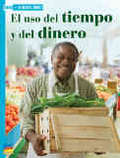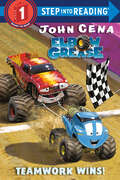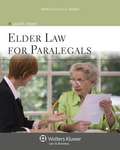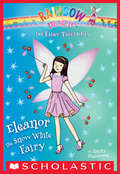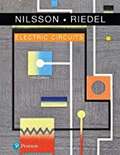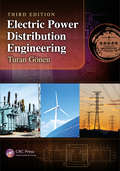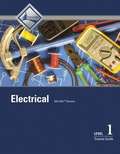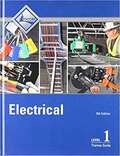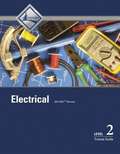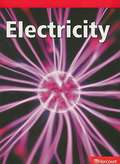- Table View
- List View
El trombón problemático del tío Jacob (¡Arriba la Lectura!, Level O #10)
by John Parsons Rae DaleNIMAC-sourced textbook
El uso del tiempo y del dinero: Textos Para La Lectura Atenta (Texts Close Reading )
by Benchmark Education Co., LLC StaffNIMAC-sourced textbook
El viaje a Colina Rocosa (¡Arriba la Lectura!, Level P #75)
by Susy Boyer Jill McDougallNIMAC-sourced textbook
El viaje de acampada que cambió Estados Unidos: Theodore Roosevelt, John Muir, y nuestros parques nacionales (¡Arriba la Lectura!, Read Aloud Module 7 #2)
by Mordicai Gerstein Barb RosenstockNIMAC-sourced textbook
El viejo carro del abuelo (¡Arriba la Lectura!, Level I #12)
by Annette Smith Anne SpudvilasMi abuelo tiene un carro viejo. No va tan rápido como su carro nuevo. ¡Pero a él le encanta su viejo carro! NIMAC-sourced textbook
El zorro y la cigüeña (¡Arriba la Lectura!, Level H #60)
by Annette Smith Tamsin HinrichsenEl zorro le hace una broma a su amiga la cigüeña. Pero la cigüeña le enseña al zorro algo sobre la amistad. NIMAC-sourced textbook
El ídolo del hockey sobre hielo (¡Arriba la Lectura!, Level L #5)
by Jill McDougall Wayne BryantNIMAC-sourced textbook
El único e incomparable Iván (¡Arriba la Lectura!, Trade Book #10)
by Katherine Applegate Patricia Castelao Mercedes GuhlNIMAC-sourced textbook
Elbow Grease: Teamwork Wins! (Step into Reading)
by John CenaIt's up to Elbow Grease, the little blue monster truck who never gives up, to help his brother and his whole monster truck family in this Step 1 reader from superstar entertainer and #1 New York Times bestselling author John Cena!A fun and fast-paced leveled reader from multitalented mega celebrity John Cena! Elbow Grease and his four monster truck brothers love to race--but even the fastest racers have to slow down every once in a while, whether it's to stop for a tune-up, tire change, or some extra gas. Except Crash is having so much fun, he doesn't want to stop! Can Elbow Grease and his brothers work together to reel Crash in? Young readers will love Elbow Grease and his monster truck family in this Step 1 reader based on John Cena's Elbow Grease picture book series!Step 1 Readers feature big type and easy words for children who know the alphabet and are eager to begin reading. Rhyming and rhythmic text paired with picture clues will help young readers decode the story.
Elder Law for Paralegals
by Laurel A. VietzenElder Law for Paralegals prepares students to assume a productive role in law firms that focus on elder law. A wealth of learning and teaching aids reinforces the lessons in the text. A highly adaptable structure and generous ancillary support make teaching Elder Law and related courses a pleasure: if you've never taught it before. Timely and practical, Elder Law for Paralegals features: * consistently rich and innovative pedagogy, including crossword puzzles, marginal definitions, review questions, and practice exercises, * practical tips that address cultural and generational differences between young adults and the elderly, * up-to-date internet resources, conveniently referenced throughout the text.
Eleanor the Snow White Fairy: A Rainbow Magic Book (The Fairy Tale Fairies #2)
by Daisy MeadowsJoin the Fairy Tale Fairies as they make sure everyone's favorite fairy tale characters get their happily ever after! Happily Ever After? Once upon a time, Rachel and Kirsty were excited to attend the special Fairy Tale Festival at TipTop Castle. But when Jack Frost steals the Fairy Tale Fairies' magic items, stories everywhere get all jumbled up. Even worse, characters from inside the books are coming to life and finding their way into the human world! Eleanor's magic comb is in goblin hands -- but not for long, if Rachel and Kirsty get their way! Without it, Snow White will never get back in her story! Find the special fairy object in each book and help save the Fairy Tale Magic!
Electric Circuits
by James Nilsson Susan ReidelElectric Circuits, Tenth Edition, is designed for use in a one or two-semester Introductory Circuit Analysis or Circuit Theory Course taught in Electrical or Computer Engineering Departments. This title is also suitable for readers seeking an introduction to electric circuits. Electric Circuits is the most widely used introductory circuits textbook of the past 25 years. As this book has evolved to meet the changing learning styles of students, the underlying teaching approaches and philosophies remain unchanged. MasteringEngineering for Electric Circuits is a total learning package that is designed to improve results through personalized learning. This innovative online program emulates the instructor's office-hour environment, guiding students through engineering concepts from Electric Circuits with self-paced individualized coaching.
Electric Circuits KitBook
by David M. Jones Ed BasconiThis KitBook provides an introduction to electricity and electric circuits.
Electric Circuits: Student Investigations
by National Science Resources CenterNIMAC-sourced textbook
Electric Power Distribution Engineering
by Turan Gönen<p>A quick scan of any bookstore, library, or online bookseller will produce a multitude of books covering power systems. However, few, if any, are totally devoted to power distribution engineering, and none of them are true textbooks. Filling this vacuum in the power system engineering literature, Electric Power Distribution System Engineering broke new ground. <p>Designed specifically for junior- or senior-level electrical engineering courses, the book covers all aspects of distribution engineering from basic system planning and concepts through distribution system protection and reliability. Drawing on decades of experience to provide a text that is as attractive to students as it is useful to professors and practicing engineers, the author demonstrates how to design, analyze, and perform modern distribution system engineering. He takes special care to cover industry terms and symbols, providing a glossary and clearly defining each term when it is introduced. The discussion of distribution planning and design considerations goes beyond the usual analytical and qualitative analysis to emphasize the economical explication and overall impact of the distribution design considerations discussed.</p>
Electrical Energy and Circuit Design: Student Guide and Source Book
by National Science Resources CenterNIMAC-sourced textbook
Electrical Level 1 Trainee Guide (Eighth Edition)
by Nccer<P>This exceptionally produced trainee guide features a highly illustrated design, technical hints and tips from industry experts, review questions and a whole lot more!<P> Key content includes:<P> Orientation to the Electrical Trade, Electrical Safety, Introduction to Electrical Circuits, Electrical Theory, Introduction to the National Electrical Code, Device Boxes, Hand Bending, Raceways and Fittings, Conductors and Cables, Basic Electrical Construction Drawings, Residential Electrical Services, and Electrical Test Equipment.
Electrical Level 1: Trainee Guide
by NccerThis exceptionally produced trainee guide features a highly illustrated design, technical hints and tips from industry experts, review questions and a whole lot more! Key content includes: Orientation to the Electrical Trade, Electrical Safety, Introduction to Electrical Circuits, Electrical Theory, Introduction to the National Electrical Code, Device Boxes, Hand Bending, Raceways and Fittings, Conductors and Cables, Basic Electrical Construction Drawings, Residential Electrical Services, and Electrical Test Equipment.
Electrical Level 2 Trainee Guide (Eighth Edition)
by NccerThis exceptionally produced trainee guide features a highly illustrated design, technical hints and tips from industry experts, review questions and a whole lot more! Key content includes: Alternating Current, Motors: Theory and Application, Electric Lighting, Conduit Bending, Pull and Junction Boxes, Conductor Installations, Cable Tray, Conductor Terminations and Splices, Grounding and Bonding, Circuit Breakers and Fuses, Control Systems and Fundamental Concepts.
Electrical Principles and Practices
by Glen MazurThis textbook explains residential, commercial, and industrial applications of electrical and electronic principles. Content includes NFPA 70E® arc blast and arc flash requirements, portable generator sizing, power optimization, utility power factor and peak demand penalty, load shedding, power factor correction, smart grid and smart appliance technology, and wireless speakers.
Electrical Wiring (Ninth Edition)
by Ralph Duncan James E. WrenThe information in this publication is based on the minimum electrical standards based on the codes found in the National Electrical Code®. Each topic discussed and illustrated, where applicable, is referenced to the NEC® article or requirement that governs the procedure.

